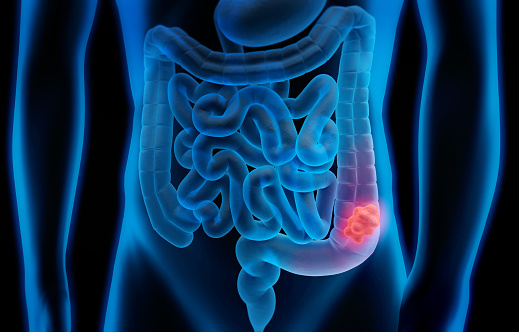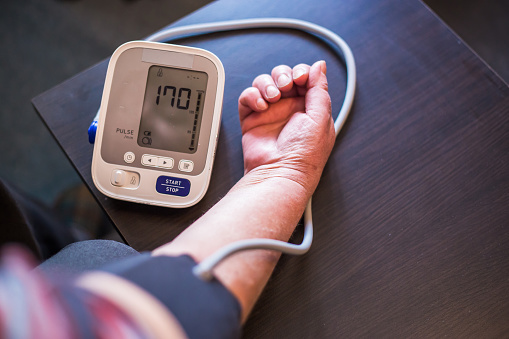What Is Hematemesis (Vomiting Blood)?

Hematemesis
Hematemesis is the vomiting of blood.
Hematemesis is the vomiting of blood. It is continually a critical sign. It may be stressed with hemoptysis (coughing up blood) or epistaxis (nosebleed), which can be more common. The supply is typically the top gastrointestinal tract, generally above the suspensory muscle of the duodenum. It can be ulcers, tumors of the belly or esophagus, ovaries, extended and energetic retching, gastroenteritis, ingested blood (from bleeding within the mouth, nose, or throat), or certain drugs.
Hematemesis is handled as a clinical emergency, with remedies based entirely on the amount of blood loss. Investigations include endoscopy. Any blood loss can be corrected with intravenous fluids and blood transfusions. Patients might also want to avoid taking anything by mouth.
Differential prognosis
Hematemesis can be because of:
- Peptic ulcer. This can be associated with Zollinger–Ellison syndrome, which causes intense disease.
- Vascular malfunctions of the gastrointestinal tract, including bleeding gastric varices or intestinal varices.
- Mallory-Weiss syndrome: bleeding tears inside the esophageal mucosa, typically because of extended and energetic retching.
- Vomiting of ingested blood after bleeding inside the mouth, nose, or throat.
- Tumors of the belly or esophagus.
- Irritation or erosion of the liner of the esophagus or belly.
- Radiation poisoning.
- Viral hemorrhagic fevers.
- Gastroenteritis.
- Gastritis.
- Chronic viral hepatitis.
- Hepatic schistosomiasis, or intestinal schistosomiasis.This is because of the parasite Schistosoma mansoni.
- Iatrogenic injury (invasive system including endoscopy or transesophageal echocardiography)
- Atrio-oesophageal fistula.
- Yellow fever.
- Strongyloidiasis.
- Certain drugs
Hematemesis is handled as a clinical emergency. The maximum essential difference is whether or not there’s there’s enough to reason surprised. Correct control is needed in such situations. All assessments, including endoscopy, must be carried out earlier than medicine. A platelet check is likewise a critical check in such situations. Medicines, including painkillers or antibiotics, e.g., ciprofloxacin, may want to lower platelets that may cause thrombocytopenia (while the frame no longer has enough platelets within the blood and can not shape clots).

In such situations, incorrect medicine or control might be deadly. Blood transfusion is needed if the frame loses over 20 percent of the rame blood extent. Severe loss makes it impossible for the coronary heart to pump enough blood to the frame. In such situations, unmaintained blood extent may cause hypovolemic surprise (hypovolemic surprise may cause harm to frame organs, e.g., kidney, brain, or gangrene of fingers or legs). Note that an untreated affected person may want to go through cerebral atrophy.[citation needed]
Minimal blood loss
In instances that don’t, the remedy might also contain proton pump inhibitors (including omeprazole) to deal with belly ulcers if they’re there. This is given till endoscopy may be arranged. Blood transfusions can be given if the extent of hemoglobin inside the blood is shallow; this is much less than 8.zero g/dL or 4.5–5. zero mmol/L. An affected person can be saved, not anything, via means of mouth (or no consuming or drinking). Adequate venous access (including with massive-bore cannulas or a principal venous catheter) is typically received if the affected person suffers an additional bleed and becomes unstable.
Significant blood loss
There can be surprising in a hemodynamic locally significant” case of “hematemesis. Resuscitation is direct precedence over saving your death. Intravenous fluids and blood transfusions may be given, ideally via a massive bore intravenous cannula.
The affected person is ready for emergency endoscopy, generally achieved in a running theatre. The surgical opinion is typically sought if the supply of bleeding can not be diagnosed endoscopically and laparotomy is necessary. Securing the airway is pinnacle precedence in hematemesis patients, particularly people with a disturbing awareness level (hepatic encephalopathy in esophageal varices affected person). This can be performed with a cuffed endotracheal tube. Octreotide can be used if varices cause bleeding.
Techniques
Hematemesis, melena, and hematochezia are signs and symptoms of acute gastrointestinal bleeding. Bleeding that brings the affected person to the doctor is a capability emergency and must be considered until its seriousness may be evaluated. The desires in coping with a prime acute gastrointestinal hemorrhage are to deal with hypovolemia by restoring the blood extent to normal, to make a prognosis of the bleeding web page and its underlying reason, and to deal with the cause of the bleeding as definitively as possible.
The records must be directed toward confirming the presence of bleeding, estimating its quantity and rapidity, figuring out the supply and capability precise reasons, and eliciting the presence of significantly related sicknesses that would adversely affect the outcome. The data received is instrumental in figuring out conditions that require competitive control.

Hematemesis is a critical situation that causes you to throw up blood. It’s more than a speck of blood in your spit; vomiting blood indicates you’re in your digestive system, and you also have to get clinical interest properly away.
What Causes Hematemesis?
Hematemesis is an indication of bleeding to your top digestive tract. This consists of the primary part of your intestine, belly, or esophagus. Your esophagus is the tube that connects your mouth to your belly.
Some not unusual place hematemesis reasons consist of:
- Stomach ulcers. Known as a peptic ulcer, this is a painful, open sore to your belly lining. You also can get those sores within the first part of your intestine, referred to as duodenal ulcers. These sores can harm an artery, causing you to vomit blood.
- Esophageal varices. Esophageal varices are swollen vessels within the nose out of your mouth for your belly. These arise while scarring or clots to your liver block regular blood flow. The blood will redirect to those smaller vessels that don’t have much blood. When they emerge as too swollen, they can leak blood or burst and cause purposeless bleeding.
- Gastroesophageal reflux disease, or GERD, occurs when belly acid backwashes into the esophagus, causing inflammation. Severe instances can worsen the lining and cause bleeding.
- Mallory-Weiss tear. This bleeding tear to your esophagus lining happens after violent and extended coughing or vomiting. It’s regularly connected to heavy alcohol drinking.
Less Common Causes of Vomiting Blood
There are different, much less unusual, place hematemesis reasons, too. These can consist of:
- Radiation exposure
- Stomach cancer
- Esophagus cancer
- Swallowing a poison
- Hemorrhagic fever is an infectious sickness that causes intense infection and inner bleeding.
- A blood situation like anemia or hemophilia
What Are Hematemesis Symptoms?

The foremost symptom of hematemesis is blood in your vomit. The blood and vomit can be:
- Bright crimson blood
- Brown
- Black
- Like espresso grounds
You may also have blood in your stool, which looks like sticky, black tar.
When you lose a lot of blood, your organs don’t get enough oxygen, and you could move into surprise. If you’re your blood and now have the subsequent signs and symptoms, name 911:
- Dizziness
- Cool, clammy skin
- Pale skin
- Blue lips or fingernails when you have mild skin
- Gray lips or fingernails when you have darkish skin
- Fast and shallow respiratory
- Weakness
- Tiredness
- Fast pulse
How Is Hematemesis Diagnosed?

If you watch you’re so you’re blood, you have to visit a health center proper away. If you can, carry a small pattern with you. Your medical doctor will want information about what the vomit looks like.
They will look at you and ask for information about how you’re feeling and a few checks to verify which and why you’re blyou’blyou’ryouonsist of:
- Blood checks to search for infections or clotting problems
- X-ray scans
- Endoscopy, in which a tube with a digital digicam is positioned into your esophagus to get snapshots
- Nuclear medicinal drug scan, which makes use of radiation to take snapshots of the way your organs
- Since vomiting blood is a clinical emergency, your medical doctor will supply emergency remedies first when you have signs and symptoms of surprise and respiratory problems.
What Is the Treatment for Hematemesis?

True hematemesis is a clinical emergency and can’t be dealt with at home. Your medical doctor will want to locate the cause of your bleeding and prevent it, then deal with any underlying conditions. If you’vegonee you” go you have hade of loss; they could provide you with medicines and a few fluidsIfee you have a whole lot of blood loss, you may want the following:
- Blood transfusion
- Intravenous, or IV, fluids
- Oxygen and respiratory assistance
- Blood-strain medicines
Once you’re ready, your doctor will determine the cause. Treatment can consist of antacid medicines, antibiotics, embolization to dilate a blood vessel, and other treatments.
Is a Little Blood in Vomit Normal? It’s not unusual to have blood on your spit after brushing and flossing your teeth. You may additionally vomit and swallow after a nosebleed; however, this is this.
Sometimes, you may also spit bloody fabric out of your lungs. This is normally foamy and shiny crimson and takes place after a lot of coughing. It’s referred to as apoptosis and is typically associated with vomiting blood.
Ifyou’reespyou’revomitt out of your mouth with shiny crimson blood, however, youhaven’tthhaven’tsebleedd, or if it’s black, it looks as if espresso grounds; see a black tractor. If it seems like espresso grounds, its manner of blood has been there for some hours.
Related: How can we Move more daily in these ways?


















hcq medical abbreviation aralen chloroquine